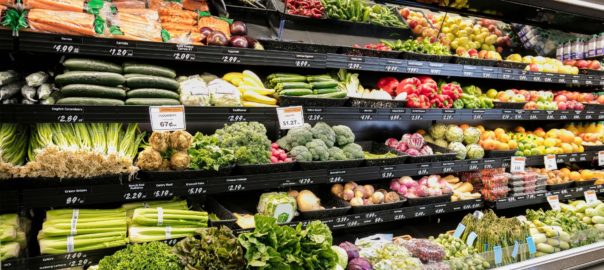In a world where the cost of living seems to be ever-rising, it can feel like a luxury to prioritize healthy eating. But fear not, for there are plenty of ways to feed well without breaking the bank. With a little creativity and know-how, you can enjoy nutritious and delicious meals while staying within your budget. So, whether you’re a savvy saver or simply looking to cut down on food costs, read on for our top tips on how to eat well for less.

– Smart Grocery Shopping Strategies to Save Money and Eat Healthy
When it comes to eating healthy on a budget, smart grocery shopping strategies can make all the difference. By planning ahead and making informed choices, you can save money while still enjoying nutritious meals. Here are some tips to help you feed well for less:
- Make a Meal Plan: Before heading to the grocery store, take some time to plan your meals for the week. This will help you avoid impulse purchases and ensure that you only buy what you need.
- Shop Seasonally: Seasonal produce is often more affordable and fresher than out-of-season options. Take advantage of local farmers markets or grocery store sales to stock up on fruits and veggies.
- Buy in Bulk: Consider purchasing staple items like rice, beans, and oats in bulk to save money in the long run. Just make sure to store them properly to maintain their freshness.
With these simple strategies, you can shop wisely, save money, and still enjoy delicious and nutritious meals.
– Utilizing Seasonal Produce and Bulk Buying to Stretch Your Food Budget
One effective way to stretch your food budget without sacrificing nutrition is to make the most of seasonal produce and bulk buying. By incorporating more fruits and vegetables that are in season, you not only save money but also enjoy greater flavor and freshness. Look for local farmer’s markets or grocery stores offering seasonal discounts on items like berries in the summer or squash in the fall.
Another cost-saving strategy is to buy in bulk whenever possible. Purchasing staple items like rice, beans, and oats in larger quantities can result in significant savings over time. Consider joining a bulk-buying club or purchasing items in bulk from warehouse stores to take advantage of lower prices per unit.
Tips for utilizing seasonal produce and bulk buying:
- Create a meal plan based on seasonal produce to maximize savings and nutritional value.
- Stock up on frozen fruits and vegetables when they are on sale to have nutritious options year-round.
- Consider investing in a deep freezer to store bulk purchases for long-term savings.
– Cooking in Batches and Meal Prepping for Convenience and Cost Savings
In today’s fast-paced world, finding the time to cook healthy meals can be a challenge. However, with a little planning and preparation, you can save both time and money by cooking in batches and meal prepping.
One of the key benefits of cooking in batches is that you can take advantage of buying ingredients in bulk, which often results in cost savings. By preparing a larger quantity of food at once, you can also reduce the amount of time spent in the kitchen throughout the week. With a well-stocked pantry and fridge, you can easily whip up a variety of meals without the need for last-minute trips to the grocery store.
Meal prepping is another great way to ensure you have healthy, convenient meals at your fingertips. By spending a few hours on the weekend to prepare and portion out meals for the week, you can avoid the temptation of reaching for unhealthy fast food options when you’re short on time. Consider investing in reusable containers to store your prepped meals, making it easy to grab and go during the busy workweek.
By incorporating cooking in batches and meal prepping into your routine, you can take control of your diet, save money, and simplify your life. With a little planning and organization, you can enjoy budget-friendly healthy eating without sacrificing flavor or nutrition.
- Making Simple Swaps and Substitutions for Affordable Nutritious Meals
When it comes to eating well on a budget, making simple swaps and substitutions can make a big difference in both your health and your wallet. By choosing affordable yet nutritious ingredients, you can create delicious meals without breaking the bank.
One easy swap is trading out expensive proteins like meat for more budget-friendly options such as beans, lentils, or tofu. These plant-based sources of protein are not only cost-effective but also packed with nutrients like fiber and vitamins. You can use them in dishes like salads, stir-fries, or soups for a satisfying and budget-friendly meal.
Another smart substitution is replacing refined grains like white rice or pasta with whole grains such as quinoa, brown rice, or whole wheat pasta. Whole grains are not only more nutritious but also keep you full longer, making them a great option for stretching your food budget. Try using them in dishes like grain bowls, casseroles, or salads for a budget-friendly twist on classic recipes.
In conclusion, eating well doesn’t have to break the bank. By implementing some simple strategies and being mindful of your food choices, you can enjoy a healthy and delicious diet while saving money. Remember, small changes can lead to big results when it comes to your health and your wallet. So, next time you’re grocery shopping or planning your meals, keep these budget-friendly tips in mind and watch your health and savings grow simultaneously. Happy eating!